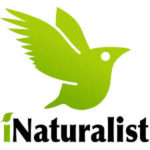- Home
- /
- /
- 20071210-Morchella escul Weatherhead.FINAL copy
Help with identifying fungi
We recommend using the iNaturalist platform as a fast and accurate way to identify and map fungi. See here for more on this.
posts & blogs
- Welcome to our new Fungimap Coordinator July 3, 2024
- Half a million fungi records and counting – By Tom May July 3, 2024
- Exciting news: Fungimap awarded large SA citizen science grant! April 18, 2024
- Grant success! February 29, 2024
- New resource: how to photograph and describe my fungus February 8, 2024
- Tasmaniomyxa umbilicata: a new genus and species of slime mould from Tasmania January 30, 2024
- Webinar featuring Sarah Lloyd January 24, 2024
- Monitoring Tea-tree Fingers 2023 November 6, 2023
Categories
eNews archive
Fungimap eNews 72 – April 2024
Fungimap eNews 71 – March 2024
Fungimap eNews 70 – February 2024
Fungimap eNews 69 – December 2023
Fungimap eNews 68 – November 2023
Fungimap eNews 67 – October 2023
Fungimap eNews 66 – September 2023
Fungimap eNews 65 – August 2023
Fungimap eNews 61 – April 2023
Fungimap eNews 60 – March 2023
Fungimap eNews 59 – February 2023
Fungimap eNews 58 – December 2022
Fungimap eNews 57 – November 2022
Fungimap eNews 56 – October 2022
Fungimap eNews 55 – September 2022
Fungimap eNews 51 – April 2022
Fungimap eNews 50 – March 2022
Fungimap eNews 49 – February 2022
For earlier editions, see the Mailchimp archive


